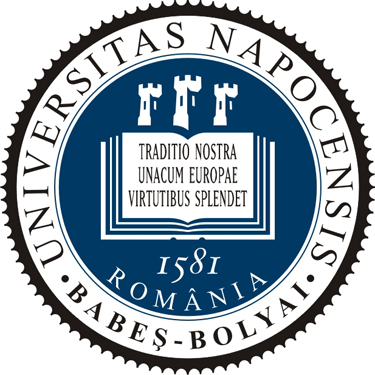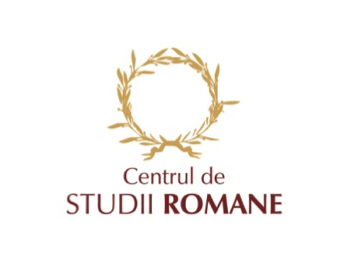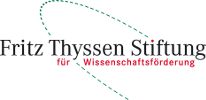









Objectives. O1. The main objective of this project is to bring a major contribution to the population studies of the Roman Empire and stress upon their importance in truly knowing life in all its aspects for the provincial Romans. We aim at offering a full view of the population of the targeted provinces, as reflected epigraphically and tentatively archaeologically, integrating and inter-linking all characters, from elites to middle classes, from freedmen to slaves, from children to adults, from soldiers to civilians, etc. As well, we intend to go beyond, into the social, economical and even political history of the given provinces. The activities leading to fulfilling O1 will be: A1. Critical analyses of the sources and re-interpretation, when required; A2.Quantitative and qualitative analyses.
O2. Constructing the first historical population database for the Roman world and ensuring its functioning on the long run is the second objective of our project. While a database is not in itself an end and a final purpose, in this case it is a necessary and effective tool towards a methodological breakthrough. As well, it will not incline towards edition/collation of existing material, as the metadata in itself will be completely different from that of epigraphic or text databases. The activities subsumed to this objective will be: A1. Identifying all persons attested for the Principate period in the provinces of our focus; A2.Building the metadata for the epigraphic database; A3.Filling in the datasheets of epigraphically attested characters; A4. Building and testing the beta version of the archaeological database.
O3. The third objective concentrates dissemination and the educational side. This objective focuses on making the results of our project known to the scientific community, as well as on education. We consider that education is what humanities scholars can – and are meant to – give back to society; thus, as outreach activities, we plan on organizing a series of workshops and meetings with interested students, presenting them the basic aspects of employing digital classics in the study of Roman society, the principles of constructing a database, realities of the attested population from the area researched by us, etc. Thus our results will be output (articles, proceedings, database), as well as outcome (increasing the knowledge level on matters concerning population research based on ancient sources). The activities implied by this objective are: A1. Publication of studies and articles; A2.Participation in international conferences; A3. Organizing an international conference (milestone, after 12 months) + publishing its proceeding; A4. Organizing a series of training workshops for students.
O4. The final objective of this project will be identifying future ways of continuing the research, extending the database for other provinces and developing future projects.This objective will have a sole activity (O4A1), mainly identifying new routes and plan for the extension and further continuation of the project.
Investigation methods and tools. Our working methods will be strictly adapted to the objectives of the project. The first step (O2A1; months 1-18) will be to create the documentary foundation for the database. Thus, the team members will collect all the inscriptions attesting persons from the provinces of our focus. The gathering of the sources will go hand in hand with the “cleansing” operations (O1A1; months 1-20). The main problem that this task will be faced with is the degree of preservation of some sources and the necessity of re-interpreting others; old and new scientific literature will be used in order to correctly reconstruct names, life events and historical contexts. In order to make our work as efficient as possible, we will establish partnerships with the already existing repository of sources (the EAGLE platform, EDH, the Pelagios for geo-referencing, UbieratLupa for images, etc.). Based on this repository and the socio-historical realities implied by the sources, the team will adapt the architectural frame of the database, able to host all categories of information provided by various sources (O2A2; months 1-4). Simultaneously with the data collecting and establishing a set of rules for the epigraphic database, we will focus on the construction of the archaeological database and its testing (O2A4; months 6-18). The architecture of the database is inspired by the modern population databases, starting from the IDS elaborated by EHPS-Net. Of course, major content adjustments are in order, due to the fundamental differences existing between sources and the nature of the personal data registered. As envisioned at this point, the database will have three interrelated tables: Personal Data, Relationships and Inscriptions. Theoretically, the first sheet to be filled in is the one describing the source, as here an Inscription code will be allocated for each artefact; the inscription code will be found in the personal data sheet, where we will have the possibility to connect a character with all the sources that attest him. Besides this code, the Inscriptions table will record the type of inscription, language, material, stylistic details, atypical features, as well as context data (place of provenience and discovery, georeferenciacion, dating, bibliography, external links). A great tool are the Eagle vocabularies (http://www.eagle-network.eu/resources/vocabularies/), very recently posted online and which offer a reference for uniform terminology. The Personal data table will include information on the name (all its components), filiations, juridical status, tribus, origo, domus, collegiums/associations, occupation/profession, deities worshipped, age, details of death, etc. Based on the personal ID given to each individual, the Relationship table will solely name the relationship between individuals (A to B and B to A), choosing from a drop-down menu. The metadata of the archaeological database will be built as to accommodate individuals found in funerary contexts. Its necessity is obvious, as rarely epigraphic and archaeological information have been properly correlated for the provinces of our focus. Of course, as the information will be totally different, the structure will also differ fundamentally from that of the epigraphic database; the archaeological metadata will have to accommodate context information (necropolis/isolate find), inventory data, anthropometrical and anthropological description (where there is the case, thus for inhumation graves – but not necessarily or exclusively). The IT part will be ensured by a third-party specialist and the site Romans1by1.com will be hosted by the University server. After the metadata is finalized and the database functional, we will progressively fill in the character records (O2A3; months 5-22). After a sufficient quantity of data will be collected, we will begin analyzing them (O1A2; months 6-24); we aim at implementing analyses with one or more sociological software(s), as the sample will be large and comprehensive enough. Presently, sociologists seem to prefer STATA, but SPSS might suit our type of research equally, while `R` has the advantage of being open source and seemingly as good as the other two; as well, an interesting networking analyses software seems to be Gephi, currently used at Harvard and Stanford. After our samples will become sufficiently ample, we will standardize and encode the information, so that we can try more sociological software on it; as they haven’t generally been tested for samples of population from the ancient world, the results – even the negative ones – will be of great scientifical and methodological value. As an example, one aspect that will benefit from sociology-inspired methods and tools will be the one (under-researched for the area of our interest, from our point of view) of the occupational inscriptions. As a case study: in Moesia (Superior and Inferior) and Dacia, there have been identified approximately 80 such epigraphs; for a start, we tried coding the attested professions, based on and adapting the HISCO classification (http://historyofwork.iisg.nl/). Though the system needs refining for the ancient world, the “experiment” went well and we obtained a very accurate, even if a bit raw, classification. So, in quantitative order, the categories attested are: sales workers, craftsmen, professionals in the fields of arts and sports (Greek cities presented us with some choristers, while the sports are represented by gladiators), professionals in “hard sciences and related fields” (architects, mensores, etc.), administrative personnel (here the servile component was mostly visible), processors of natural raw materials and clerical workers (private, we did not take into account the state clerks). With many interesting particular cases, the research proved very fruitful and revealing. It proved without doubt that occupational epigraphy fills in some gaps and sheds light on certain aspects of the everyday life, as well as on the mind world of the most of the provincial Romans. It doesn’t offer cross sections through the labour market, but it takes us a step further from the view from above on Roman society that we inherited along with the elites’ numerous sources. Relating the results of a proper HISCO codification for the Roman world with other parameters and using more sophisticated analysis means would certainly lead to much more complex and revealing results. The continuous dissemination of the project’s results will also be an important part of our work (O3A1 and O3A2; months 3-24). The promotion within the academia will keep the scientific community informed about the project’s latest developments and will focus, especially during the second half of the project’s duration, on finding new partners and ways of using the team’s expertise for extending the database to other provinces of the Empire (O4A1; months 12-24). The dissemination of the results will be made through participations of the team members to prestige conferences and papers published in major international peer-reviewed journal of maximum visibility. At the middle of the project’s duration, we will organize a milestone international conference, presenting our results, as well as receiving direct feedback from part of the academic community. The papers will be published in a stand-alone volume (O3A3; months 10-20). But the most important deliverable of the project will be the database, available for all specialists as a methodological model and useful working tool.